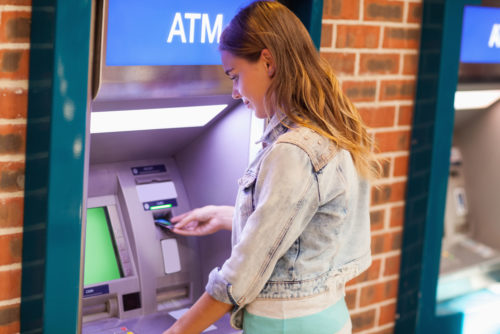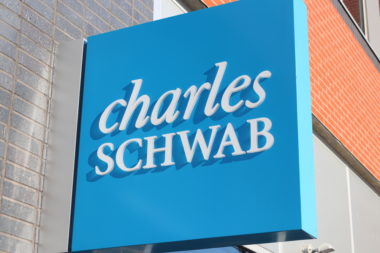Student bank accounts are specifically for young people enrolled in a university. These accounts have many of the same features as standard bank accounts, but they also have traits that appeal to young people who are in college and have limited experience managing personal finances. These student-friendly checking and savings accounts are usually easy to open and convenient to use.
Here is what you need to know about student bank accounts.
Table of Contents
What are the Advantages of Student Bank Accounts
One of the main differences between a standard bank account and student account is that the latter has fewer fees. Customers with a regular account may have to pay monthly or periodic maintenance fees, fees for using ATMs, and penalties for overdrafts.
In addition to student checking accounts, some banks also offer financial products such as secured credit cards for building a credit history and interest-bearing savings accounts for creating a nest egg or saving to pay off student loans. Most banks even provide planning tools to help young account-holders organize their savings.
Does a student need a checking account or a savings account? Can you open both?
Student Checking Accounts
A checking account is for day-to-day transactions. These accounts come with a debit card, which you can use to make purchases in person or online. You can also use the cards to withdraw cash from an ATM. In addition, most checking accounts still come with paper checks, which you can use to pay bills.
When you use a debit card for a transaction, the money is withdrawn directly from your checking account. Both online-only and brick-and-mortar banks have mobile apps or websites that you can use to track your spending when you use your card.
When you want to add money to your checking account for day-to-day use, you can deposit cash or checks in person at a bank branch. Your employer may offer to send your paycheck to your checking account electronically, and most banks have options for depositing checks via a mobile app without actually visiting a branch.
Why Get a Student Checking Account Instead of a Regular Checking Account?
Student checking accounts have a couple of important features.
- First, they do not usually have minimum balance requirements. A student can open an account with only a few dollars and not have to worry about keeping a specific amount of money in their account.
- Secondly, banks typically charge overdraft fees when an account-holder spends more money than they have in their account. Banks do not usually levy such fees on student accounts.
Student Savings Account
Savings accounts provide a place to keep funds that are not a part of your day-to-day budget. A bank rewards customers for saving money in this type of account by paying them interest. Interest rates for student savings accounts are very modest, but these accounts are accessible because they have low minimum balance requirements. Banks offer certificates of deposit (CDs) or money market accounts. These specialized products pay higher interest rates, but also require larger deposits and may charge penalties if you withdraw money.
Ideally, a student will open both a checking and a savings account at the same bank. Most bank customers deposit money into their checking account. Once you make this deposit, you can transfer money to your savings account from checking. You can perform a transfer manually via a website or mobile app, ask a teller to complete the transfer for you, or set up automatic transfers on a biweekly or monthly basis.
How to Open A Student Bank Account
Some banks and credit unions have relationships with specific universities. The schools allow these banks to market services to students. Though you should still perform research to make sure that an institution meets your financial needs, these on-campus options are often convenient and provide a straightforward path to opening an account.
The requirements to open a bank account vary from institution to institution, but student accounts, by design, have a low barrier to entry.
What Do You Need to Open a Student Bank Account?
When you go to the bank (or enroll via a website):
- The bank will ask for Identification, such as a driver’s license or passport.
- You will need to provide your Social Security number.
- Since you are opening a student account, you need proof that you are enrolled in college. This could be a student ID or other documents such as class registration forms or a transcript.
- The bank will also ask for a phone number, physical address, and email address.
What Else to Expect When Opening an Account
Student checking and savings account typically do not have minimum balance requirements, but banks will typically ask you to make an initial deposit. These deposit amounts can vary by bank and are usually between $25-$100.
Some banks allow you to open a student account online, while others prefer that you do so in person. The enrollment process should take about 15 minutes for a checking account and a bit longer if you include a savings account.
You can also consider if you want to automatically transfer money into your savings account from your checking account on a regular basis. You can arrange this type of automatic transfer at any time, but the bank rep who helps you open up your account can do it right away.
Best Bank for Students
There is not a single “best” bank for college students. The “best bank” is the one that meets your needs and offers you student-friendly features, easy access to ATMs, and reliable customer support. Convenience can play a factor in your choice. Is there a bank branch near campus that you can go to if needed? Are there fee-free ATMs nearby? If you are interested in an online-only bank, you should check to see what type of customer support they offer. Can you call and talk to an actual person if needed?
You should also consider how much cash you use. If you receive payments in cash (such as tips from a part-time job) and you want to deposit them, you need to open a student checking account at a brick-and-mortar bank. Online banks do not handle cash deposits.
Banks use different perks to attract students
Most banks have low deposit requirements for opening an account. Major banks like Capital One, Chase, and Wells Fargo require a $25 deposit at opening. Online banks such as Ally, Chime, and Simple offer financial planning and tracking tools that you can use to create a budget and build your personal finance plans.
The best student accounts do not charge maintenance fees, and they forgive the occasional overdraft (provided you meet the requirements for depositing money to bring your balance back above $0).
Student checking and savings accounts provide features and tools that students can take advantage of while they are in college. You can open both types of accounts at the same institution.
Image Source: https://depositphotos.com/





